Vegan Staples
If you’re new to plant-based eating and a little unsure of what the heck to eat, this list of how to stock vegan staples should help point you in the right direction. With all these items on hand, all you’ll need are your weekly fresh fruits and vegetables and you’ll be ready to start eating a healthy, plant-based diet.
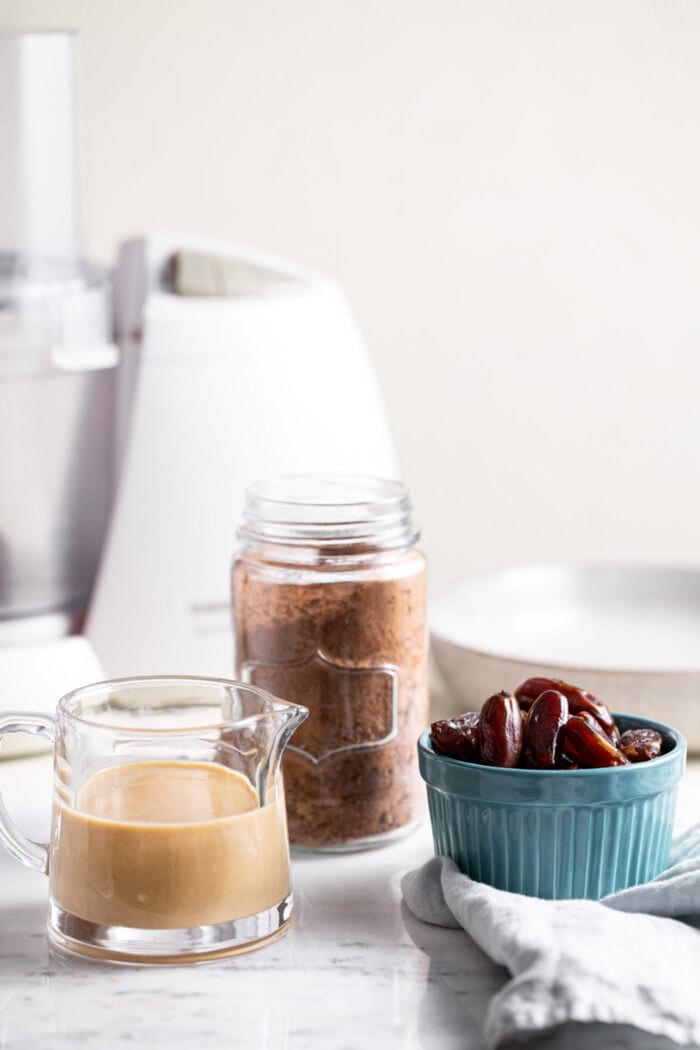
Organize Your Pantry
I’ve found that by keeping an organized and visually-appealing pantry, I’m much more likely to use the foods I have on hand. By staying organized I also save money, prevent food waste and am able to keep foods fresher much longer by using a selection of storage containers.
Here are my favourites for storing food in both the pantry and the fridge and freezer.
- Ball Mason Jars – Mason jars are an affordable and beautiful way to organize your kitchen. I like wide mouth jars best for easy access. Flip-top large and small jars are also good for storing pantry items. You can also buy plastic lids to prevent the metal ones from rusting, you can pick up a set of 8 storage lids for under $3.
- Weck Jars – Weck jars are one of the cutest and most beautiful ways organize to your pantry and store food in the fridge. They just looks so good all stocked up with grains, seeds or nuts or stacked in your fridge with food prep items ready for the week. They’re also perfect for everything from smoothie bowls to overnight oats and great or storing sauces and other small-batch items that need to be refrigerated. I have a selection of jars from the small and medium jars that are great for fridge items, to the tall and skinny jars that are great for storing items like grains, nuts and seeds in the pantry.
- Glasslock Containers – These BPA-free and recyclable glass storage containers are excellent for storing prepared food in the fridge or freezer and for taking food on-the-go. They keep food fresh and are oven and microwave-safe. Airtight and leak-proof, they’re the way to go! You can grab a full set for about $35 on Amazon and the small upfront investment really pays off in the long run.
- Flip-Top Hermtic Seal Jars – I also love Hermetic seal flip-top jars for storing everything from pantry items to fresh food in the fridge. You can even buy small ones that are perfect for storing spices you’ve bought in bulk. The wide-mouth ones are awesome for pantry items and they can even be used for fermenting.
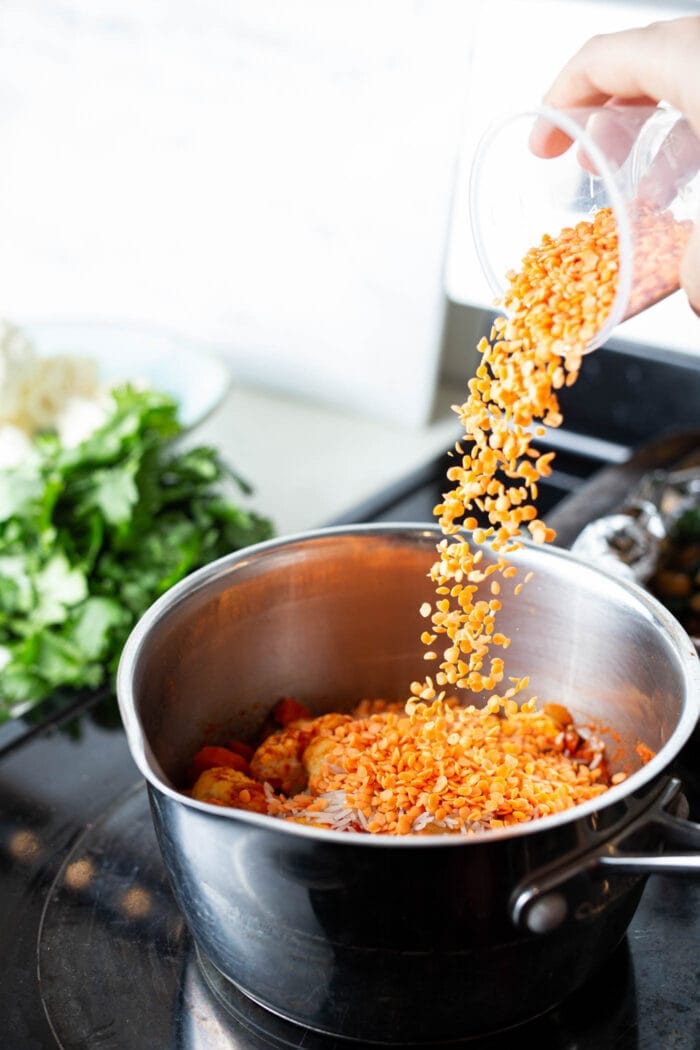
How to Stock a Vegan Pantry
Beans and Lentils
Having a variety of beans and legumes on hand for quick and filling meals is essential. Beans and legumes are inexpensive, a great source of fiber and provide energizing protein and carbohydrates with little fat.
I like to keep a variety of canned beans and dried beans and lentils in my pantry. Canned beans are easy to use straight from the can and they’re so versatile you can pair them with almost anything for an added boost of flavour, texture and nutrition.
Cooking your own beans is really easy too and I’ll often include a batch of chickpeas in my weekly food prep.
- red lentils
- green lentils
- canned and/or dried chickpeas
- canned and/or dried black beans
- canned and/or dried kidney beans
- canned and/or dried navy beans
- canned and/or dried black-eyed peas
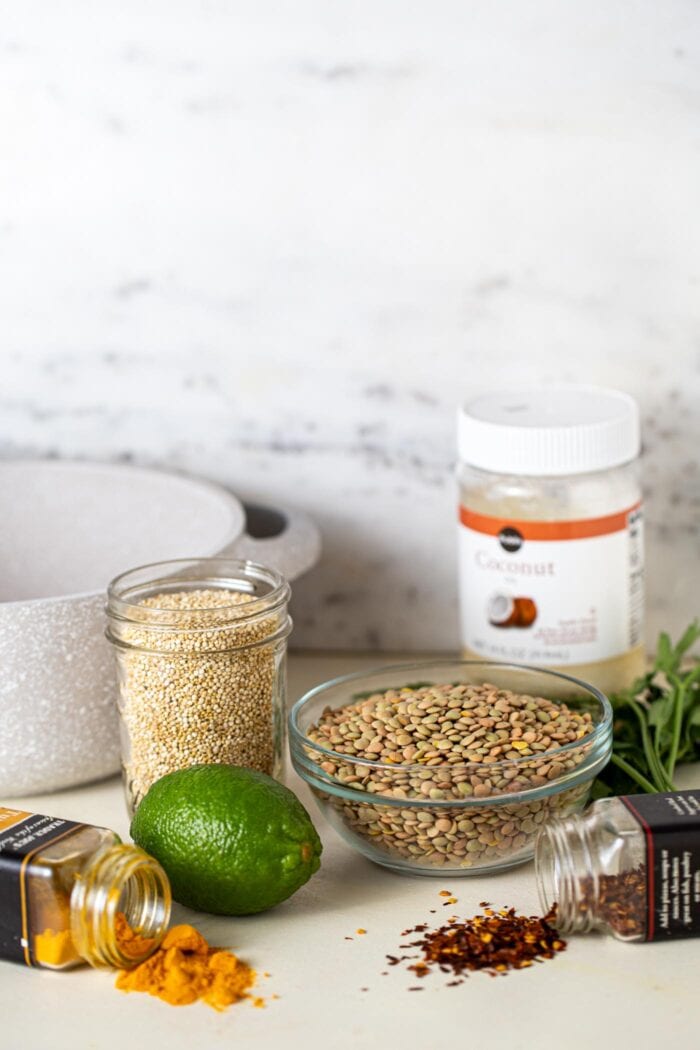
Whole Grain Essentials
Whole grains are a wonderful source of fibre and complex carbohydrates. Grains are versatile, inexpensive, filling and a great source of vitamins and minerals. My favourites to keep on hand are quinoa and oats.
- quinoa
- brown rice
- jasmine rice
- whole-wheat and/or brown rice pasta
- quick oats
- rolled oats
Oats are probably one of the most versatile and wholesome items you’ll keep in your pantry. They’re perfect for quick breakfasts, can be used for homemade energy bars, granola bars and other baking requires, they make great pancakes and can even be used in recipes like veggie burgers.
I use both brown and white rice in my kitchen depending on what I’m making and my nutritional needs are at the time. They’re both a good source of carbohydrates if you’re highly active and need a lot of energy!
Whole Grain Extras
- millet
- couscous
- barley
- bulgar
- wild rice
- freekeh
- black bean pasta and/or edamame pasta (not grains but great for a high-protein, grain-free alternative to pasta)
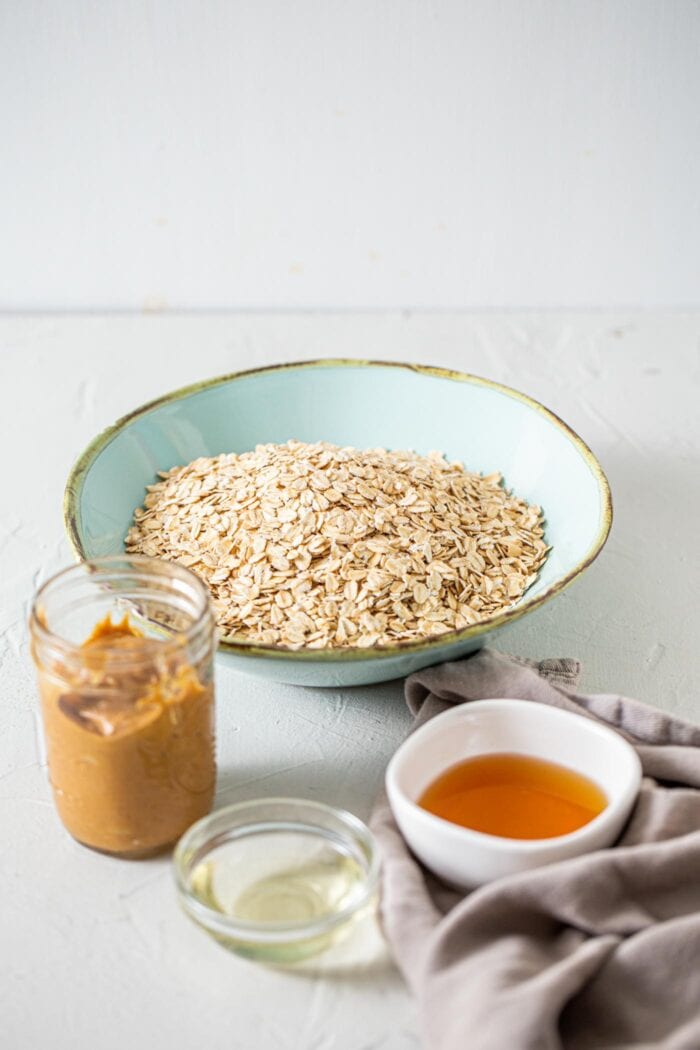
Essential Baking Ingredients
Dairy and egg-free baking is easier than you might think and by stocking a vegan pantry you’ll be able to create plant-based versions of all your favourite baked recipes.
- whole-wheat flour
- all-purpose flour
- raw cacao powder and/or cocoa powder
- dairy-free chocolate chips
- coconut flour
- baking soda
- baking powder
- pure vanilla extract
- yeast if you like baking breads
You can make everything from healthy donuts, to crackers, cookies, muffins, banana bread and even the most decadent desserts.
Check out this post on how to replace dairy in your diet and this post for how to replace eggs in baking.
Extra Baking Ingredients
If you’re gluten-free but still want to bake, you may need a few baking extras in your pantry.
Here are a few of my staples for gluten-free baking and a few other pantry must-haves I like to keep on hand.
- spelt flour
- almond flour
- peanut flour
- arrowroot powder
- tapioca starch
- garbanzo bean flour (sometimes called besan chickpea flour)
- hemp and/or brown rice protein powder
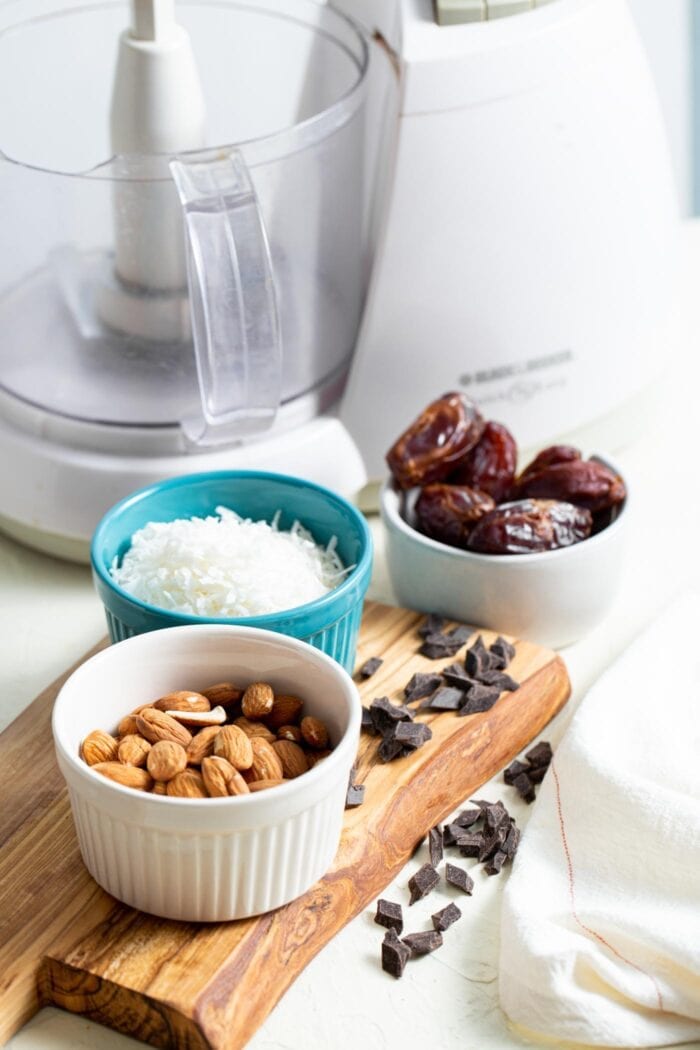
Essential Nuts and Seeds
Nut, seeds and dried fruits are essential for snacking, nutrition and adding to recipes. Nuts can be enjoyed for a healthy snack, used in recipes, added to oats and cereals, used to create amazing dressings and sauces, in homemade granola and so much more.
- almonds
- cashews
- ground flax (keep refrigerated)
- chia seeds
- hemp seeds
- pepitas (pumpkin seeds)
- rasins
- unsweetened fine coconut
- coconut flakes
- dates
- unsweetened applesauce
- sunflower seeds
- granola and/or cereals, store-bought or homemade
How to Use Nuts and Seeds
I like almonds for snacking, cashews for snacking and making sauces and desserts, I use ground flax for replacing eggs in baking and adding to oats and smoothies.
Pepitas and sunflower seeds are both packed with antioxidants and are great as a snack, added to salads or mixed into oats or granola.
Chia seeds are a must-have for me because I love making all kinds of chia seed pudding variations. Hemp seeds are my favourite superfood for their amazing nutritional profile, especially if you’re an athlete!
Dates are essential for creating energy bars and balls and they make an incredible dessert or snack when stuffed with almond or peanut butter. Coconut is awesome for raw food recipes, baking, making granola, snacking and adding to smoothies.
As for granola, if I find something delicious on sale, I’ll usually pick up some store-bought granola but granola is also really easy to make if you have the rest of these pantry staples on hand. You can try my Easy Peanut Butter Granola, Sugar-Free Cinnamon Raisin Granola or Mocha Granola if you’d like to try making your own.
I like keeping a few containers of unsweetened applesauce to use for replacing oil and sugar in baking recipes or even just eating as a snack on its own or mixed with protein powder.
All of these foods are versatile, nutrient-dense and can be used countless ways in a plant-based kitchen.
Extra Nuts, Seeds & Dried Fruits
- walnuts
- pecans
- hazelnuts
- dried cherries
- dried cranberries
- goji berries
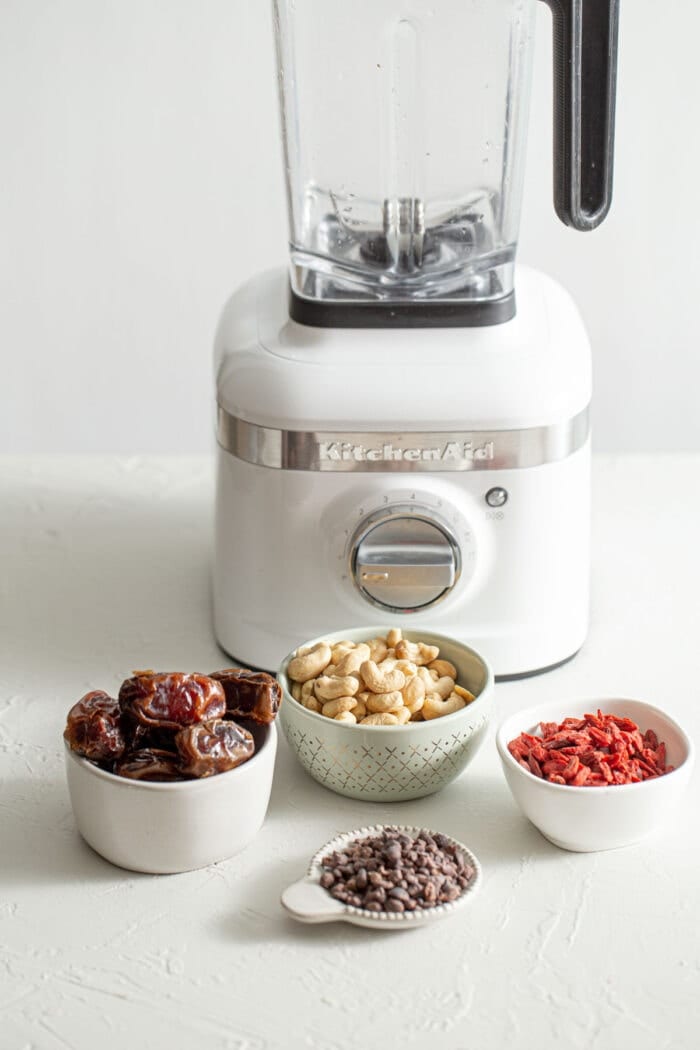
Nut and Seed Butters
This is my favourite category of plant-based pantry items! If I could, I would stock every version of nut butter I could get my hands on! My top 4 are natural peanut butter, almond butter, tahini and sunflower seed butter.
I eat nut butters every day on toast, on top of pancakes or oats, mixed into smoothies or as smoothie bowl toppings, in sweet potato breakfast bowls, in dressing and sauces and just by the spoonful for a snack!
I also use them to make homemade energy bars and balls and in baking.
I use tahini, or ground sesame seeds, almost daily in everything from dressings, to salads, to smoothies, to oats, to toast and even in desserts. Tahini is one of my favourite ingredients and a must-have in my kitchen.
- natural peanut butter and powdered peanut butter
- almond butter
- sunflower seed butter
- tahini (keep refrigerated after opening)
- coconut butter (sometimes called coconut manna)
I like making my own coconut butter to use for snacks, adding to smoothies and oats, using in recipes and spreading on toast and baked items. It’s very easy and inexpensive to make at home.
To make it, add one package of unsweetened shredded coconut to a high-speed blender and process until it turns to butter. This can take anywhere from 5 to 10 minutes, or maybe a bit longer depending on the coconut you use and your blender. Be patient, it might seem like it’s not going to happen but then all of a sudden you’ll have the creamiest, most amazing coconut butter you can imagine! I like adding a bit of sea salt and vanilla too. It’s incredible.
Once it’s finished, store in a sealed container in the pantry. If you can find a good deal on store-bought coconut butter (sometimes called coconut manna in stores), go for it. You will love the amazing taste and texture of coconut butter, it’s a wonderful source of energy and a versatile item to have on hand.
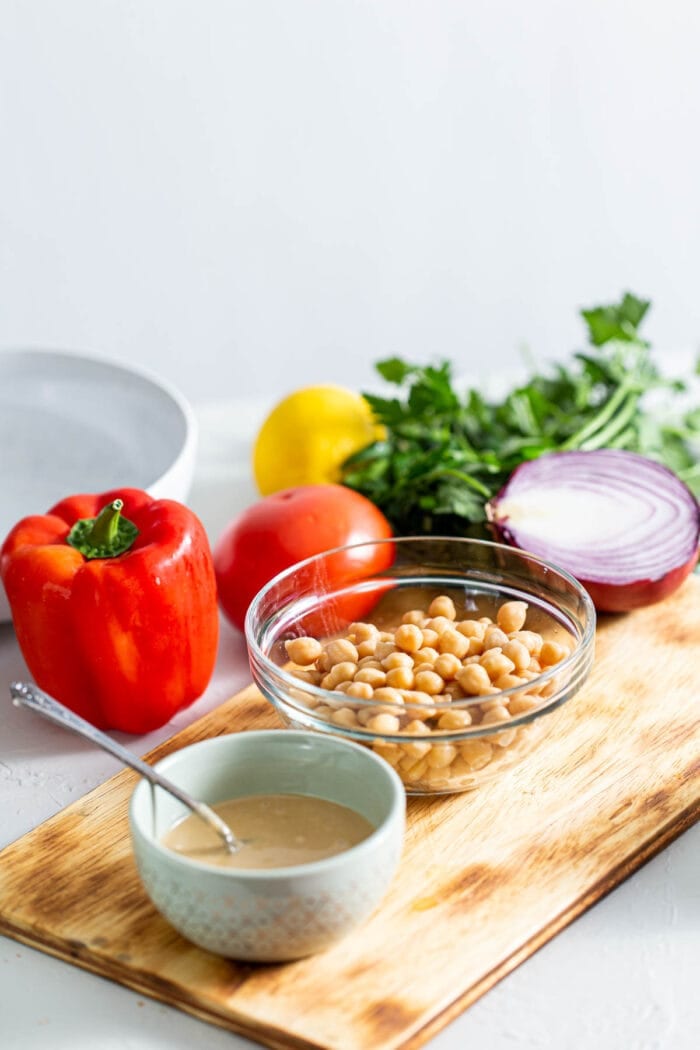
Canned Goods
I always keep a good stock of canned items for quick meals when I’m low on fresh foods and for using in recipes. Tomato paste adds richness to sauces, stews and soups. Diced tomato is great for soups, chili, stews and adding flavour and liquid to plenty of other dishes.
Coconut milk and light coconut milk is great for desserts, curries, cooking grains or cauliflower rice, adding to smoothies, using in baking and so many other recipes. I typically use light coconut milk in recipes like curries and soups to keep the fat down and I’ll use full-fat coconut milk if I need the fat in a creamy dessert like vegan cheesecake, ice cream or mousse. You can also use full-fat coconut milk to make your own coconut cream.
I used canned pumpkin a lot for smoothies, oats, pudding, desserts, baking, soups and curries. It’s versatile, nutritious and convenient.
- tomato paste
- diced tomatoes
- coconut milk
- light coconut milk
- pumpkin
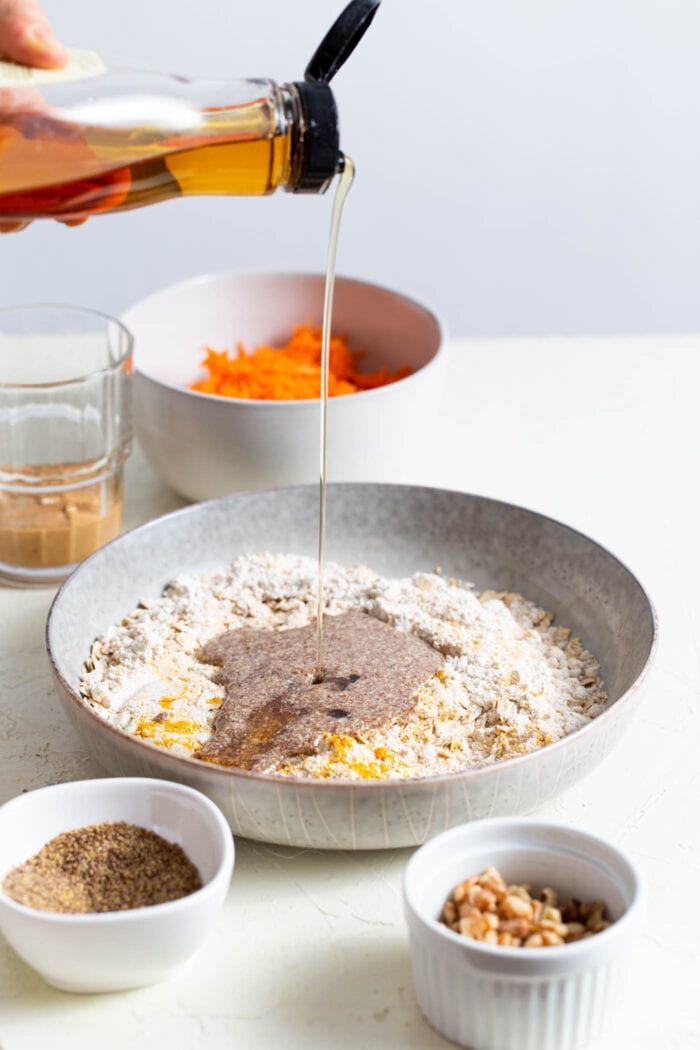
Sweeteners
Switching from refined sugar to natural sweeteners is one of the best things you can do for your health.
Although when it comes down to it, these are still sugar, some of these, such as molasses, offer a range of health benefits along with their sweet taste. They also fall lower on the glycemic index than refined sugar, meaning they won’t spike your blood sugar as much.
Learn all about the best natural sugar substitutes here.
I like raw coconut sugar for baking, I use pure maple syrup to sweeten raw food recipes and as a treat on pancakes and waffles, molasses is one of my favourite pantry items and I love it for creating gingerbread-inspired recipes or as a natural sweeter for granola and in baking.
I use stevia quite a bit for creating sugar-free desserts with no added calories from sugar. I find liquid stevia to be the easiest to use and have the best flavour but I often use powdered stevia in baking and other recipes when I’d like a more exact measurement.
- raw coconut sugar
- pure maple syrup
- molasses
- organic liquid stevia and/or powdered stevia
Sweetener Extras
I don’t typically stock these items but if you prefer you can use agave nectar or brown rice syrup as an alternative to maple syrup in recipes.
I use xylitol and erythritol every once in a while in baking but I’ll usually just buy it if I need it. If you bake a lot, xylitol or erythritol might be handy to stock for low-sugar baking. Monk fruit can be used as an alternative to stevia for sugar-free sweetening.
- agave nectar
- brown rice syrup
- xylitol and/or erythritol
- monk fruit sweetener
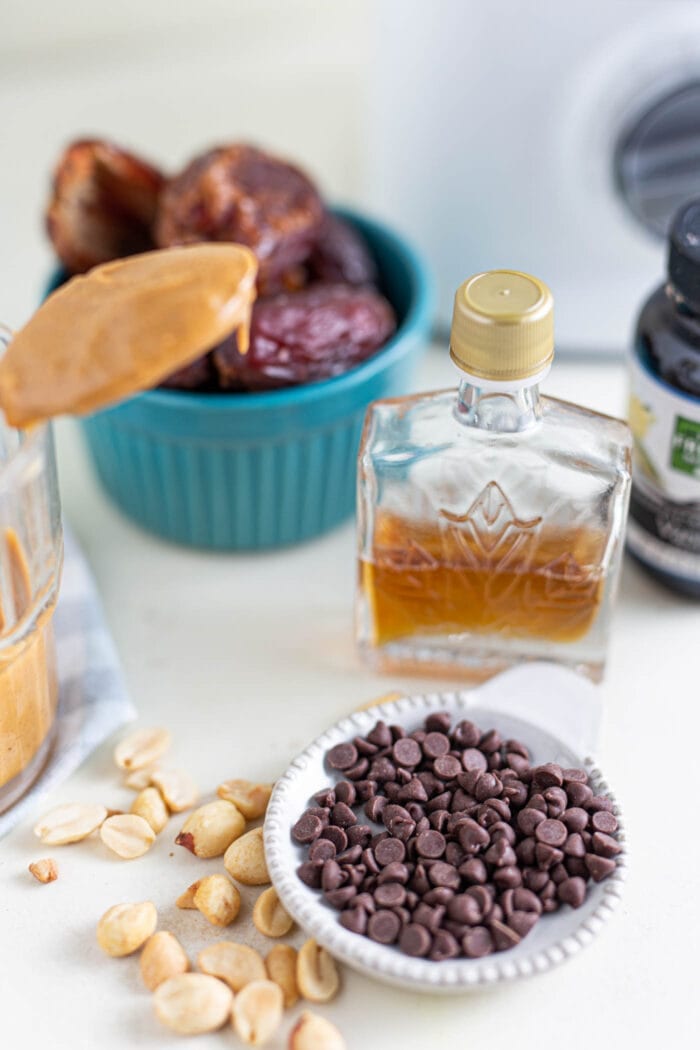
Oil and Vinegar
Having a good selection of various oils, vinegars and sauces on hand is key to creating healthy sauces and dressings and flavouring recipes without the use of added salt.
I don’t use much oil in my kitchen but I do stock olive and coconut oil so they’re there when I need them. I’ll use olive oil on occasion for making dips and salad dressings and coconut oil for making raw desserts and for cooking and baking. I use sesame oil every so often for adding flavour to Asian-inspired dishes.
I love apple cider vinegar for dressings and salads and even just adding a splash to water for it’s health benefits. I use a lot of rice vinegar to make Asian-inspired sauces and I use red wine, balsamic and white wine vinegar a lot in all kinds of recipes, sauces and salad dressings.
As for tamari or soy sauce, tamari is a gluten-free option if you’re concerned. I usually just buy low-sodium soy sauce and I use it quite often in dressing, sauces, curries, soups and as a condiment on rice and stir-fries.
- extra-virgin olive oil
- coconut oil
- rice vinegar
- red wine vinegar
- apple cider vinegar
- balsamic vinegar
- tamari and/or soy sauce
- sesame oil
Sauce, Oil & Vinegar Extras
- hoisin sauce
- peanut oil
- avocado oil
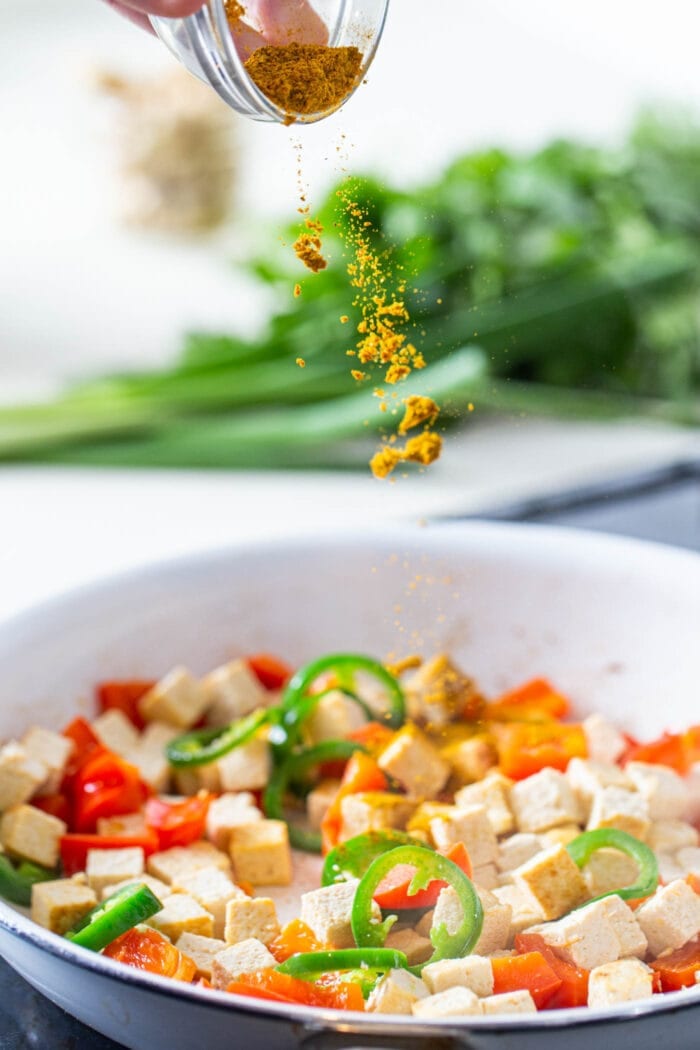
Spices and Herbs Essential
These are the spices I use the most, there are many others in my pantry that I don’t use very often. For me, these are the basics and I use them all on a regular basis.
If I had to narrow it down, I’d say my key staples are turmeric, curry powder, cumin, cinnamon garlic powder, salt and pepper.
Not only are spices and herbs a great way to flavour food without added salt, but they all offer their own host of health benefits and take healthy eating from bland to woah.
- fresh garlic
- fresh ginger
- cinnamon
- ground coriander
- ground ginger
- cumin
- chili powder
- cayenne
- red pepper flakes
- turmeric
- onion powder
- rosemary
- unrefined sea salt
- black pepper
- bay leaves
- garam masala
- smoked paprika
- garlic powder
- basil
- dill
- oregano
Other Plant-Basic Staples
- nutritional yeast – absolute must-have for pasta, sauces, popcorn, desserts, smoothies, salads, dressings
- dark chocolate – if you love chocolate, you’ve got to keep some organic extra dark chocolate on hand for snacking and using in recipes
- a variety of onions – immune-boosting, antioxidant-rich, onions are a must-have for using in recipes from soups, to salads, to dressings and everything in between
- potatoes – I like russet potatoes for fries, recipes and baked potato and baby potatoes to eat on their own
- sweet potatoes – must-have for a healthy source of complex carbohydrates and nutrition, for making fries, sauces, breakfast bowls, protein cookie dough, soups and everything in between!
- lemons – adding flavour to anything and everything and adding to water for a healthy, alkalizing, hydrating drink
- limes – just like lemons, adding flavour to anything and everything
- white miso paste – must-have for adding incredible savoury, salty flavour to soups, dressings, sauces and curries
- vegetable broth – I always keep bouillon cubes on hand for making soups, cooking grains and veggies and adding flavour to all kinds of recipes
- unsweetened almond milk – almond milk is easy to make but I usually go store-bought for convenience, on occasion I’ll make my own oat milk, hemp seed milk or cashew milk, having plant-based milk on hand is key for using anywhere you’d use cow’s milk
- dijon mustard (keep refrigerated) – must-have for calorie-free dressings, sauces, and of course, veggie burgers and veggie dogs!
- organic soft tofu (keep refrigerated) – must-have for replacing oil in all sorts of recipes and creating low-fat desserts, dressings and sauces
- organic extra-firm tofu (keep refrigerated) – a source of protein, use in tofu scrambles, make crispy baked tofu, veggie taco meat, tofu bacon and so much more
- vegan protein powder – depending on your activity level and nutrition goals, you may or may not want to stock vegan protein powder, I usually use 1-2 servings a day of various protein powders to help me reach my protein needs without overboard on fat and carbs, great for baking and raw food recipes, must-have for delicious, high-protein smoothies
- powdered peanut butter
- vital wheat gluten – I use this to make seitan for a protein source
Review my top 25 vegan essentials here.
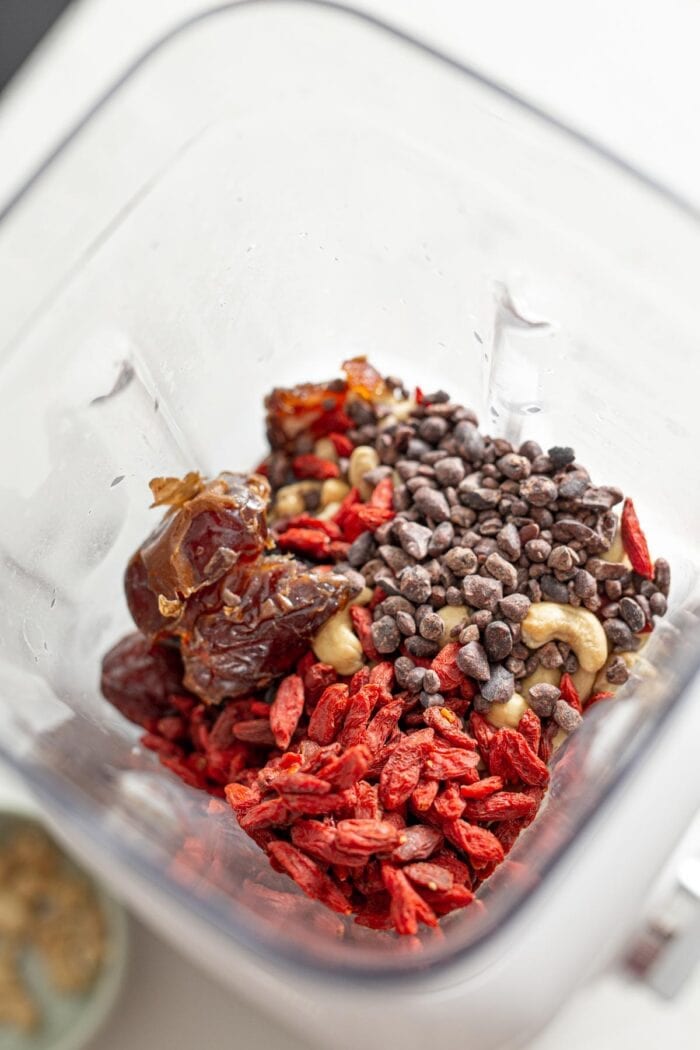
Plant-Based Superfoods
These are a few of the superfoods I stock on a fairly regular basis. If I find them on sale, I go ahead and buy extra.
They’re totally optional but to include them in my diet for a nutritional boost.
Build Your Pantry Slowly
I hope this list helps steer you in the right direction when you’re stocking your plant-based kitchen. Now that you’ve got all these staples on hand, it’s time to get into some food prep!
And remember, things don’t have to happen all at once, if you’re new to eating plant-based, take it one step at a time and remember that there’s power in small change.


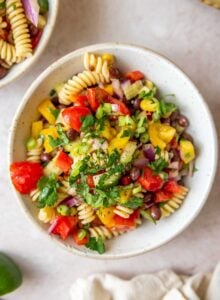
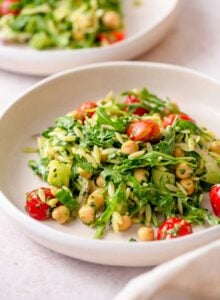
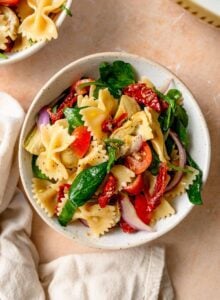
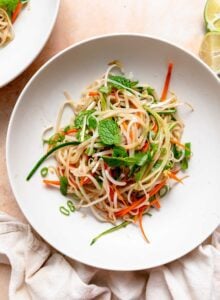
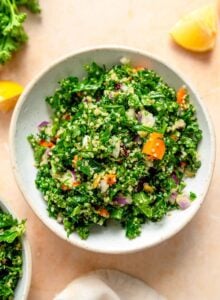
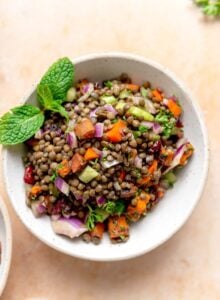
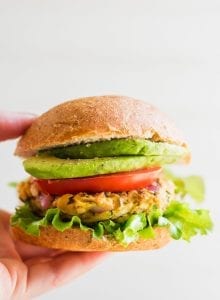
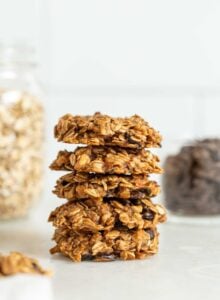
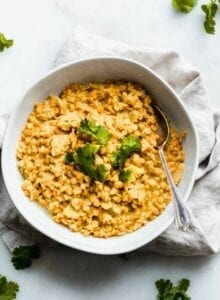
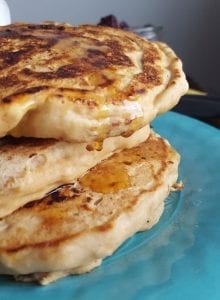
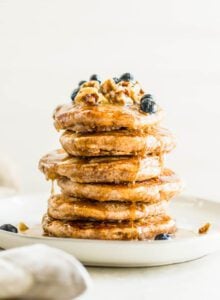

Thank you for this article!
My husband and I are transitioning to a plant-based dirt and we are buying things slowly. My husband is all gung ho about it, going shopping and bringing home all sorts of things. Then here I am trying to figure out how to use and cook them!😁
These lists and the article will be a tremendous help!
Haha, have fun!! Step by step, you’ll figure it all out. I’m glad you found this helpful!
Great list! This is pretty close to how I keep my pantry stock for clean eating. Nice to see it all in one place, I know transitioning to a whole food kitchen can be overwhelming at first this is a great go to if your just getting started, thanks for sharing!
Awesome Post Deryn! Thanks so much for the great insight. I have always been big into the health and fitness areas of my life. Until recently though, I never thought that my “healthy” way of eating was bad for me until I dug in a little deeper and realized just exactly where my foods where coming from. Watching movies such as Fed Up, Forks over Knives, Hungry for Change, and Food, Inc have changed my way of thinking forever and I am grateful that my girl friend and I (well really her) stumbled upon you blog. Such awesome info, recipes and tips. We are starting and about to launch our own fitness blog and are drawing much inspiration from yours, so thank you, and thank you for all the work and advice/tips/real living you have shared. I always cant wait to come back for more now…
Thanks so much! I just moved out and barely have anything in my pantry 😛
This will defenetly help as I am striving to become vegan! 🙂
Awesome post! This post does what I’ve been meaning to do for a newly vegetarian friend!
Thanks! I hope it helps her out!
Wow I just love this post! Before I read your post I read the title and became very interested. I’m a vegan my self and am always looking for new ideas, as I read your post I noticed that everything you put down I already own. It feels good knowing I’m on the right track to keeping my pantry well stocked. Thank you!
P.s do you have good recipes for all types of beans, and my dry beans always turn out hard how do you fix this?
Hey Chelsea! Thanks for the comment! I’m glad you enjoyed the post 🙂
Honestly, I use canned beans for pretty much everything – I try to rinse them really well to remove some sodium but I know I should switch over to dried, it’s just so easy to do canned! I do use dried lentils, but I don’t do anything special to make them. I just follow the directions on the package.